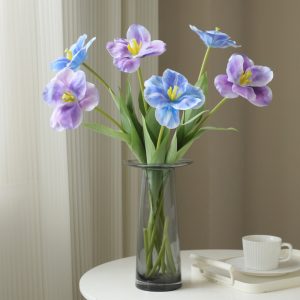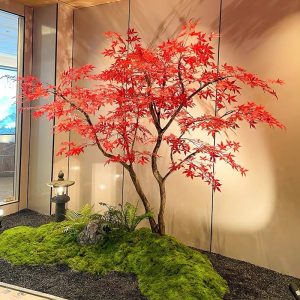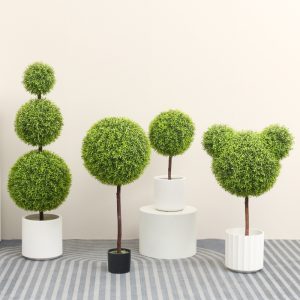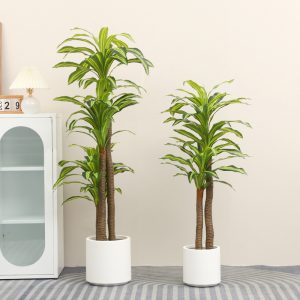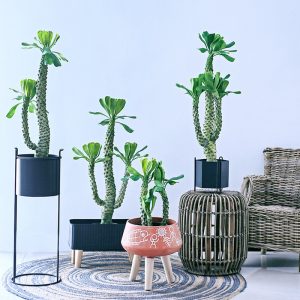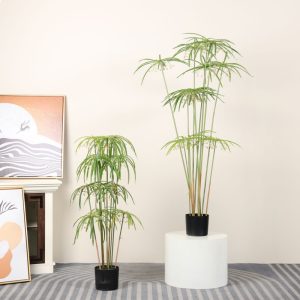On a Sunday afternoon, the Arizona sun spilled across Eva’s red brick walls like scattered gold, and my fingers, holding a terracotta vase, were slightly sweaty. This was my first visit since she moved into her new home, and on the phone, she had only said, “There’s something here that can cure my ‘plant killer’ syndrome.”
The door creaked open, and Eva, dressed in denim overalls with a dried eucalyptus flower tucked in her hair, greeted me. “Come in, I just baked some cactus cookies.” As she moved aside, I caught the sweet scent of cinnamon and chocolate, mixed with a hint of sandalwood, while the plants in the bay window of her living room emitted a strange “desert vibe.”
The entryway was tiled with geometric concrete mosaic, and a black iron candleholder filled with dried lavender swayed gently in the draft. The living room’s white walls glowed with a warm yellow hue from the sunlight, and the deep brown wooden floors gleamed with a soft shine. On the gray suede sofa, a few camel-colored knitted cushions were piled up, while across from it, an industrial-style bookshelf was stacked with plant guides and vintage cameras. In the bay window corner stood a cluster of half-meter-high plants, their sharp spines standing proud.
The plants were nestled in light gray concrete pots, the rims intentionally cracked, as if they had just been picked up from a desert floor. Three cacti of varying heights: the tallest had a round, ball-like body covered in pale yellow spines; the middle one looked like a palm stretching lazily; and the shortest was dotted with a few round “balls.” Sunlight slanted across them, casting shadows of varying lengths.
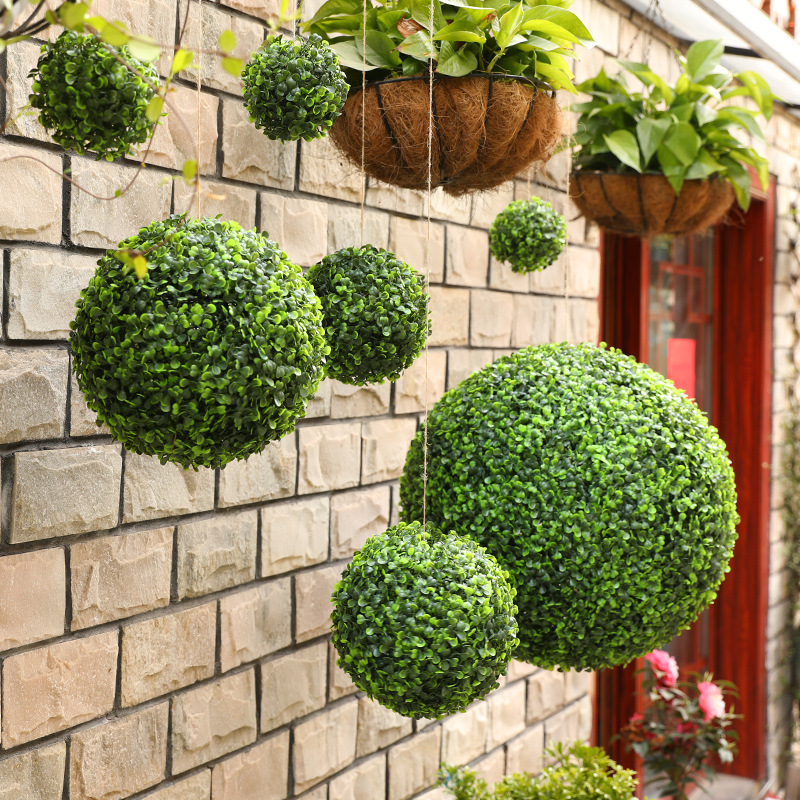
“Stunned?” Eva handed me a glass of cold lemon juice, the beads of condensation sliding down the sides of the glass. I snapped out of my daze, my fingertips hovering just above the sharp spines, afraid to touch—everything looked so real, as if they would prick my skin at any moment. “They’re fake,” she reassured, and I let out a sigh of relief, gently touching one of the small “balls,” which felt firm but with delicate texture, and even the wrinkles on its surface seemed perfectly natural.
“Is this really fake?” I leaned in for a closer look and noticed that on the tallest one, there were several light brown “spots” at the base of the spines, resembling insect bites. Sunlight poured through the blinds and danced across the “cactus,” the gray-green “skin” glistening, even livelier than the real cacti I had seen at the botanical garden.
Eva, curled up on the couch, laughed as she ran her fingers across the embroidered cactus on a pillow. “I used to have real ones, remember? I went on a two-week business trip last year and came back to find my cat had eaten it down to half, and it threw up hairballs for two days.” I definitely remembered; she had sent me a photo of the “crime scene” with the caption, “You can’t have both plants and pets.”
“But this one’s different.” She pointed to the round “balls.” “This one, my nephew threw it around like a ball last week, but after I picked it up and dusted it off, it was fine.” The sunlight moved toward the edge of the pot, and I noticed a few small white stones nestled in the “soil,” mixed with fake moss that felt dry and fresh. The most fascinating part was that one of the plants had a pink “flower” blooming at the top, with delicate petals as thin as a cicada’s wings, as though it had just blossomed in the desert.
“At first, I wanted real plants,” Eva said as she handed me a cookie. “But the florist said real cacti, while easy to care for, attract red spiders. With kids and pets at home, it’s just too much trouble. But I really love this tough, green vibe. I felt like the living room was missing that raw desert feel.” She pointed to a desert landscape painting on the bookshelf. “Even the artwork was chosen to match.”
As we were talking, Eva’s daughter, Lily, ran over with her stuffed cat. The cat jumped out of her arms, hopped onto the windowsill, and sniffed the “spines.” Seeing nothing happen, it curled up and took a nap next to the plants. “See, even the cat is fooled,” Eva laughed, pulling her daughter away. “If it were real, there’d be ‘cats flying and dogs jumping’ by now.”
Lily pointed at the pink “flower” and said, “Mom says this is a magic flower that will never wilt and can’t be pollinated by bees.” I suddenly noticed a small drainage hole at the bottom of the pot, and Eva, seeing my puzzled look, explained, “It’s for decoration. Last year, I spilled half a cup of juice in it, and after I turned it over to drain, it was fine. No water stains left at all.”
As I sat on the sofa drinking tea, my eyes kept following the shadows of the plants. The afternoon sunlight softened, and their shadows danced on the white walls. I started imagining my own desk—perhaps I should place a small replica in that empty corner that had been there for months?
In the morning light, it could reflect the steam rising from my coffee cup. In the evening, the warm glow from the desk lamp would give the “spines” a golden edge. Even if I forgot to dust it, a quick flick of a feather duster would restore its vitality—unlike the real succulents on my windowsill, which always complain with yellowing leaves when neglected.
“My husband always says I’m a plant killer.” I turned my tea cup. “I’ve killed every plant I’ve had—roots rotting on pothos, succulents turning into mush, and even the supposedly indestructible spider plant dried up.” Eva handed me a tissue. “That’s why I’m recommending this. It can go half a year without attention and still look great. You can even put it in a north-facing room, and it won’t get leggy. It’ll stay fresh all year.”
As the sun set, the light turned a soft orange-pink, giving the cacti “bodies” a golden glow. I suddenly noticed the different shapes—some like outstretched palms, some like stacked stars, and some like chubby fingers. The craftsmen had truly captured the diversity of desert plants.
Lily was drawing beside the pot, and crayon shavings fell into the “soil.” Eva casually wiped them away, and it was clean again. “If it were real, it would be full of crayon shavings by now,” she laughed. Looking at these plants, I suddenly understood their magic—they preserved the tough beauty of a plant while removing all the troublesome prickliness, like a silent guardian, quietly decorating life.
Before I left, I changed my shoes in the entryway and looked back at the living room. The sunset cast long shadows of the plants across the floor. Eva’s husband was leaning against the windowsill reading the newspaper, while the cat slept beside the cactus.
“I’ve decided. I’m going to buy one when I get home,” I said, tying my shoes, my hands full of excitement. “It would be perfect next to the bookshelf in my study, adding a bold touch of green.” Eva smiled and handed me a shopping card. “This store has the most realistic ones I’ve ever seen. Remember to pick the one with the flowers for more charm.”
The car heater hadn’t fully warmed up, but I was already planning where to put it. I’d place it on the third shelf of the bookshelf, so the sunlight would filter through the “spines” and cast patchy shadows on the pages. I’d pair it with a wooden tray to match the desk style. On weekend mornings, I could sit by it while writing proposals, glancing at it when I got tired, imagining myself in a desert oasis, with all my worries blown away by the wind.







